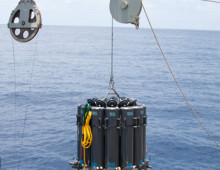Recent advances in synthetic biology could help bolster the use of engineered microbes for applications such as bioremediation, global carbon cycling and the development of alternative energy sources. In order to make high-throughput genetic modifications to various microbes, however, researchers need to develop foundational genome engineering technologies. This project works toward that end through synthesizing…
DNA Synthesis for Functional Characterization of Brachy
The model plant Arabidopsis thaliana is by far the most developed plant system, but it doesn’t allow researchers to address questions about biological features unique to the grasses. For example, the cell walls of these grasses differ significantly in cell wall composition from other plants. Currently, several grasses are in various stages of development as…
Metatranscriptomics of Forest Soil Ecosystems
Forest soils (including litter, humus and coarse woody debris) host diverse microbial communities that impact tree health and productivity, and which play pivotal roles in terrestrial carbon sequestration, and biogeochemical cycles. Among these microbial communities, fungi play various roles from decomposing leaf litter to breaking down wood. The researchers are interested in learning more about…
GEBA Phase III
The Genomic Encyclopedia of Bacteria and Archaea (GEBA) project was launched by the JGI in 2007 with a pilot project to sequence about 170 bacterial and archaeal genomes. It was extended in 2011 to 250 genomes and in 2012 to 1,250 genomes. In this project, researchers plan to extend this approach to type strains of prokaryotes…
A Novel Technique for Studying Nitrifiers
Ammonia-oxidizing bacteria and nitrite-oxidizing bacteria (AOB and NOB) catalyze nitrification and are key drivers of the nitrogen cycle. As nitrification is an important step of nitrogen removal from sewage, AOB and NOB are essential bacteria in most wastewater treatment plants. However, both groups are understudied as most nitrifiers are uncultured and the few cultured strains…
Microbial and Viral Responses to Low Oxygen Zones
Oxygen minimum zones (OMZs) occur throughout the world’s oceans but vary substantially in biological, chemical, and physical properties, notably the levels of primary production and oxygen availability. These areas are expanding due to climate warming and human modification of coastal zones. Complex microbial communities dominate OMZs and OMZ expansion is predicted to affect microbial biogeochemical…
Microbial Dark Matter, Phase II
Though more than 5,000 bacterial and archaeal genomes have been sequenced worldwide, the great majority are of rather limited phylogenetic diversity. Through the Microbial Dark Matter Project targeted 200 representatives of candidate phyla belonging to 29 major uncharted branches of the tree. The findings provided a first glimpse into the coding potential and the phylogeny…
Peat Moss as a Comparative Genomics Resource
Spikemoss (Physcomitrella patens) is one DOE JGI’s Plant Flagship Genomes. However, researchers note that despite its many advantages as a model Flagship organism, the moss is exceedingly rare in nature, is poorly characterized ecologically, and forms miniscule quantities of biomass worldwide. In contrast, peat mosses have tremendous impacts on global carbon budgets and climate.Both arctic…
Poplar and Epigenomic Reprogramming
The ability to engineer genomes or selectively breed for traits desirable for bioenergy crops is a costly and time-intensive process. Innovative methods that enable rapid reprogramming of stable gene expression patterns is desired. To this end, for this project, researchers plan to combine common practices for Populus plant regeneration from tissue culture or stem cuttings…
Unraveling the Rhizosphere Carbon Cycle
Two-thirds of the carbon in the terrestrial biosphere is stored as soil organic matter, and plant roots are the primary source of this stabilized soil organic carbon. While the soil surrounding roots accounts for only 1-2% of the total soil volume, the rhizosphere can provide 30-40% of the total soil organic carbon input. The microbes…
